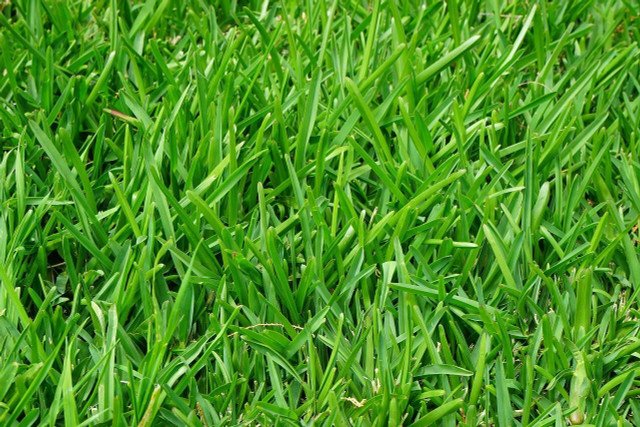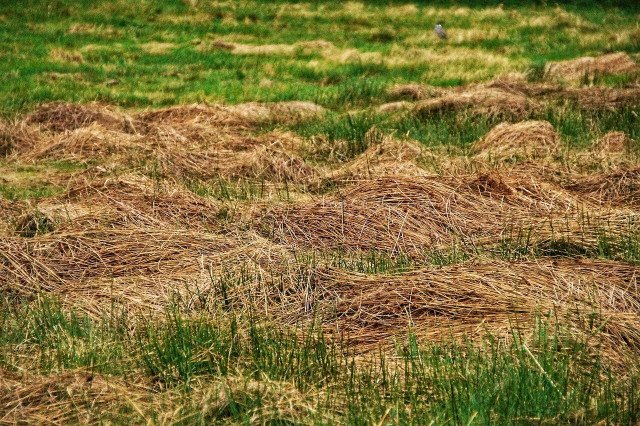If you have a garden, you have plenty of lawn clippings. Instead of throwing it away, we have ideas for you on how to reuse your lawn clippings.
If you take proper care of your lawn and mow it regularly, you will be rewarded with a strong and dense lawn. Mowing the lawn means not only an incomparable smell of freshly cut grass, but also quantities of lawn clippings. However, it’s much too good to throw away. We have four tips for you on how you can reuse the cut grass.
Contents
Why reuse grass clippings?
In principle, you can dispose of lawn clippings in the organic waste garbage can. The contents are composted or can be converted to methane in biogas plants. When lawn clippings ferment, gases such as the greenhouse gas methane are produced. The methane can then be used to generate electricity. However, the organic waste garbage can is quickly full due to a lot of lawn clippings.
In addition, unpleasant odors arise when the grass lies around for a long time. Although you can take garden waste to some recycling centers, you can also put grass clippings to good use yourself. Grass is rich in nitrogen and consists mostly of water. It can serve as an organic fertilizer for your plants.
Tip 1: Compost grass clippings

Compost lawn clippings and recycle your garden compost. However, you can’t just throw lawn clippings on the compost pile because they don’t decompose as quickly and are very compact and impermeable to air. Compost (or humus) is created by microorganisms decomposing and transforming garden waste. In addition to food and some moisture, they also need sufficient oxygen. If they do not have this, the microorganisms die over time. The garden waste will therefore no longer decompose and your compost will not mature. In addition, bacteria form smelly gases such as ammonia or hydrogen sulfide.
- Air is key: Make sure your lawn clippings have a good supply of oxygen so they don’t start to ferment in the compost. This is noticeable by an unpleasant odor (acidic to sulfurous). If the grass seals the rest of the compost pile airtight, the waste will begin to rot instead of decompose. A well-ventilated compost pile does not stink, but smells like fresh forest soil (European Federal Environmental Agency).
- Less is better: Pour only a thin layer of lawn clippings onto the compost pile at a time.
- Layer and/or mix: It is optimal if you layer different garden waste with it. Let the grass dry a bit before adding the next layer to prevent rotting. Shrub cuttings, for example, provide good air circulation. Alternatively, you can store wood chips from pruning in the fall or spring and mix them in with the grass clippings. The wood chips also ensure that air gets into the grass clippings and that they decompose.
- Be sure to follow these tips. Otherwise you will endanger your long-term compost. After all, microorganisms need up to a year to decompose garden waste. Work with a little less grass clippings and see how they react with the rest of your compost. A compost accelerator can help boost the decomposition process.
Tip 2: Use lawn clippings as mulch

You can use lawn clippings as mulch.
One is for your plants in the garden:
Pour fresh lawn clippings around the plant you want to mulch. It prevents weeds from growing, protects from cold in the winter, and protects the soil from drying out. The grass provides nutrients for organisms living in the soil, but it can also attract slugs and snails because of the moisture it collects.
Mulch with a thin layer of grass clippings. If too thick a layer of grass begins to rot, it could harm some plants in the bed. Also, mice might settle into cozy piles of grass.
Second, you can mulch the lawn yourself:
Mow your lawn without a collection box on the lawn mower. In this way, the cut grass remains on the lawn, decomposing and nourishing it.
If necessary, you can spread the cut grass with a rake.
Tip 3: Prevent plant spread with lawn clippings

If you want to prevent plants or even weeds from growing in certain places in your garden, reach for fresh lawn clippings. Pile it in the desired places, such as paths or edges of beds. This can help, for example, when self-seeding plants have mature seeds, such as maidenhair in the fall.
Tip: Once the grass clippings have dried out after a week or two, you can use them as mulch. Where you have taken away the dried grass, you can place fresh again after mowing the lawn. Lawns should be mowed regularly. With good timing, you will have a useful cycle and you will always have mulch and you can use the grass clippings to prevent weeds from spreading.
By the way, not all “weeds” are weeds. Read more here: 10 weeds you can eat.
As you already guessed, you shouldn’t make too big a grass pile here either. Otherwise, you’ll always have an unpleasant smell in your nose. If enough air gets to the grass cuttings, this is less the case.
Tip 4: Make hay from grass clippings

If you dry your grass clippings long enough, they become hay. Hay is primarily a high quality feed or bedding for your (own) pets such as rabbits or horses. Depending on your needs, you can also give some away to neighbors or others who need hay.
Tip: Dried grass looks good around strawberry plants, for example, as you avoid ground contact of the ripe fruits.
To make hay, you need to get plenty of air to the grass. You can achieve this by turning it often. In this way you prevent mold and rot. The drying process takes about seven to ten days. Usually you can let the grass dry on the lawn, but you should also protect it from the weather. Therefore, keep it on a grid or similar and covered until it is completely dry.
It is best to store the dried hay in a well-ventilated container (e.g. a basket with air holes) so that it does not go bad and cause pathogens that are harmful to animals.
By the way, you can compost hay just like fresh lawn clippings. Sometimes hay even makes more sense when you throw particularly moist garden waste on the compost pile.

